#sketch to html service
Explore tagged Tumblr posts
Text
Unlock the secrets of Sketch to HTML conversion with our comprehensive guide. Learn step-by-step techniques for flawless Sketch to HTML transformations {2024}.
#Sketch to HTML Conversion#Sketch to HTML Conversion Services#Sketch to HTML#Sketch#HTML#Sketch to HTML Conversion Guide#Sketch to HTML Conversion Steps#PSDtoHTMLNinja
0 notes
Text
Revamping Your Shopify Store: A Guide to Incorporating Modern Design Elements
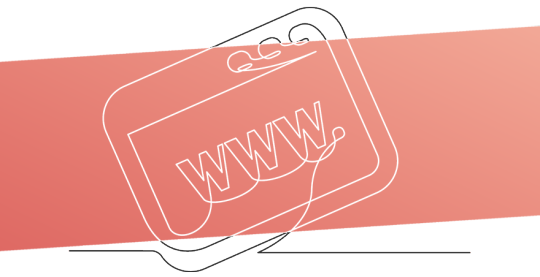
Transform your Shopify store with the latest design trends to enhance user experience and boost conversions.
Introduction
In the fast-paced world of e-commerce, staying ahead of design trends is not just beneficial; it’s essential. A well-designed Shopify store can significantly enhance user experience, increasing engagement and sales. This guide will walk you through incorporating modern design elements into your Shopify store, ensuring it remains fresh, relevant, and appealing.
Understanding Modern Design Elements
Modern design elements in e-commerce blend aesthetics with functionality, creating a seamless shopping experience.
Key components include intuitive color schemes, readable typography, and structured layouts.
These elements work together to form a cohesive look that resonates with your brand and appeals to your target audience.

Step 1: Evaluating Your Current Design
Start with a thorough audit of your existing Shopify store. Look at your site from a customer’s perspective and note areas for improvement. Consider user feedback, analyze your conversion rates, and assess the overall visual appeal. Identifying these areas will set a clear direction for your revamp.
Step 2: Choosing a New Color Scheme
Color significantly impacts consumer perception and behavior. Select a color scheme that reflects your brand’s personality and appeals to your target demographic. Utilize color psychology to evoke the desired emotions and actions from your visitors. Tools like Coolors or Adobe Color can help you create a modern palette that complements your products and branding.
Step 3: Updating Typography
Typography influences how users digest content on your site. Choose fonts that are easy to read and align with your brand’s tone. Consider using a combination of typefaces for headings and body text to enhance readability.
Shopify offers a range of customizable font options, allowing you to refresh your store’s look with just a few clicks.
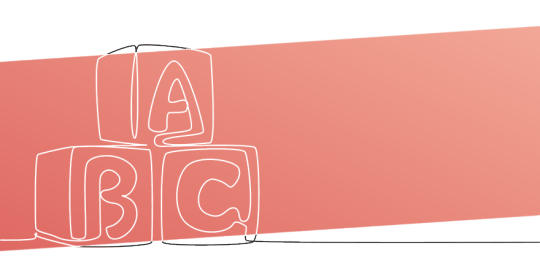
Step 4: Rethinking Layout Structure
A well-structured layout guides visitors through your store, improving user flow and increasing the likelihood of purchase. To showcase your products effectively, embrace modern trends like minimalism, card layouts, or dynamic grids. Shopify’s theme store provides templates that adhere to contemporary layout standards, making finding one that suits your brand easier.
Step 5: Incorporating New Design Elements
Elevate your store’s aesthetic by adding modern design features such as animations, micro-interactions, or video backgrounds. These elements can enhance storytelling and engage users. However, ensure these additions do not slow down your site, as speed is crucial for retaining customers and improving SEO.
Conclusion
Regularly updating your Shopify store’s design is vital in maintaining a competitive edge. Incorporating modern design elements can create a more engaging and effective online presence. Remember, the goal is to enhance the shopping experience without overwhelming visitors.

Call-to-Action
Take the first step towards a more modern and effective Shopify store today!
Experiment with new design elements, but always prioritize your users’ needs and preferences.
For further inspiration and resources, visit Shopify’s design blog and explore the latest themes and features.
#shopify#e commerce#business#e commerce business#ux desgin#ui design#ux ui design#ui ux design#web design#graphic design#canva#adobe#adobe photoshop#adobe illustrator#adobe stock#adobe firefly#figma#figmadesign#figma to html#sketch#xd#liquid#apps#shopify agency#shopify app development#shopify developers#shopify development company#shopify development agency#shopify development services#outsourcing
1 note
·
View note
Text
Freelance Web Development Useful Tricks
In today’s digital age, businesses and individuals are constantly seeking professional help to build and maintain their online presence. This surge in demand has paved the way for a booming market in freelance web development. Whether you're a seasoned Freelance Web Developer or just stepping into the world of freelance work, learning a few practical tricks can significantly improve your productivity, client relationships, and project outcomes.
This guide provides useful tips and insights tailored for those working as a Freelance Web Designer, Web Developer Singapore, or a Freelance Website Developer Singapore.
1. Define Your Niche
As a Freelance Web Designer, the first step to building a successful career is finding your niche. Instead of trying to serve everyone, focus on a specific market. For example, becoming a Freelance Website Designer Singapore who specializes in e-commerce platforms can help you attract targeted clients.
Narrowing your services helps you become an expert in that area, making it easier to deliver higher-quality results and command better rates.
2. Build a Professional Portfolio
Your portfolio is your most powerful marketing tool. As a Freelance Web Developer Singapore, it's important to showcase not just finished websites but also the thought process behind them. Include case studies, user experience improvements, and before/after examples.
Clients in web design Singapore often prefer seeing real-world applications. A well-crafted portfolio tells them you are the right Website Designer Singapore for the job.
3. Use Contracts for Every Project
A common mistake new freelancers make is working without a contract. A good contract outlines the project scope, deadlines, payment terms, and revision limits. Whether you’re a Freelance Website Designer or Freelance Web Developer, having a legal agreement helps protect both parties and sets clear expectations.
Especially in regions like Singapore, where business professionalism is crucial, this step adds to your credibility.
4. Embrace Web Design Tools
Leveraging the right tools can save hours of work. Platforms like Figma, Sketch, and Adobe XD are essential for any Freelance Web Designer Singapore. Similarly, GitHub and GitLab are invaluable for version control if you're a Freelance Website Developer.
These tools not only streamline your workflow but also make collaboration easier with clients and teams.
5. Master Responsive Design
Clients expect websites to look perfect on all devices. Mastering responsive design is critical for any Web Developer Singapore. Use flexible grids, images, and CSS media queries to ensure that your designs look and function well on desktops, tablets, and smartphones.
This is especially important in Singapore, where mobile usage is among the highest in the world.
6. Optimize for SEO
A beautiful website is of little use if it can't be found online. Every Freelance Website Designer and Freelance Web Developer Singapore should have a working knowledge of SEO fundamentals. This includes optimizing page speed, using semantic HTML, and ensuring that websites are mobile-friendly.
Clients looking for web design Singapore services often prefer professionals who can provide both design and SEO support.
7. Keep Up With Trends
The web design and development industry is always evolving. Trends like dark mode, voice search optimization, and minimalistic design are shaping the future. As a Freelance Web Designer, staying updated helps you offer modern and appealing designs to your clients.
Being knowledgeable about trends makes you a more competitive Website Developer Singapore or Freelance Website Designer Singapore.
8. Communicate Clearly and Frequently
Good communication is the backbone of freelance success. Regular updates, clear explanations, and managing client expectations are crucial. If you're a Freelance Website Developer in Singapore, effective communication can help you stand out in a market known for its high standards.
Always confirm client needs and follow up with written summaries after meetings.
9. Time Management is Key
Freelancing gives you flexibility, but it also requires discipline. Use project management tools like Trello, Asana, or Notion to organize tasks and deadlines. A Freelance Website Developer Singapore handling multiple clients will benefit greatly from scheduling tools and time tracking apps.
Meeting deadlines consistently will build your reputation as a reliable Website Designer Singapore.
10. Offer Maintenance Services
Many clients need ongoing support after a website goes live. Offering maintenance packages—such as updates, backups, and minor tweaks—is a smart way for any Freelance Web Developer to earn recurring revenue.
In the competitive web design Singapore industry, providing post-launch support can give you an edge over others.
11. Leverage Social Proof
Gather testimonials from satisfied clients and display them prominently on your website. As a Freelance Web Designer Singapore, social proof builds trust and credibility. Encourage clients to leave reviews on platforms like Google, LinkedIn, or Clutch.
It helps potential clients feel more confident in hiring you as their Website Developer Singapore.
12. Price Your Services Smartly
Pricing can make or break a freelance career. Research market rates and consider the complexity of the project before quoting. Whether you're a Freelance Web Developer Singapore or Freelance Website Designer, avoid underpricing just to get a job—it can hurt your business in the long run.
Offer tiered pricing packages to give clients options that match their budget.
13. Network Within the Local Community
Even in a digital world, word-of-mouth still matters. Attend local meetups, seminars, and webinars related to web design Singapore. Building relationships with other professionals can lead to referrals and collaborations.
Being known in the local scene can greatly benefit a Freelance Web Developer Singapore or Freelance Website Developer Singapore.
14. Invest in Learning
Technology changes fast. Take time to learn new frameworks, design patterns, or CMS platforms like WordPress, Webflow, or Shopify. This is especially useful for a Freelance Website Designer Singapore targeting clients in different industries.
Courses from Udemy, Coursera, or free resources like MDN Web Docs can help you stay ahead.
15. Protect Your Work
Always keep backups and secure your source code. Use version control systems and cloud storage to ensure that no data is lost. As a Freelance Website Developer, protecting your work is as important as creating it.
For those in Singapore, where clients expect high data integrity and privacy, security is a must-have skill.
16. Build a Personal Brand
Branding isn’t just for big businesses. As a Freelance Web Designer Singapore, having a personal brand can help you stand out. Use consistent colors, a unique logo, and a professional tone across your website and social profiles.
Your brand is your identity—make it memorable.
17. Specialize in CMS Platforms
Many small businesses prefer using content management systems for easy updates. Specializing in WordPress, Joomla, or Drupal can be a game changer for a Freelance Website Developer Singapore.
Offering CMS-based solutions can expand your market reach in web design Singapore.
18. Set Client Boundaries
To avoid burnout, it's essential to set clear boundaries regarding your work hours, communication channels, and project scope. Many Freelance Web Designers fall into the trap of being available 24/7.
Define and communicate your availability upfront.
19. Ask for Referrals
Don’t hesitate to ask satisfied clients to refer you to others. Referrals are one of the best ways to grow your freelance business. A Freelance Web Developer Singapore can benefit immensely from personal recommendations.
Referrals reduce your need for marketing and often lead to higher-quality clients.
20. Stay Consistent
Consistency is key in delivering quality results and growing your business. Whether you’re a Freelance Website Designer Singapore or a Website Developer Singapore, being consistent in your communication, design style, and deadlines will build trust.
It’s this consistency that builds long-term success.
Final Thoughts
Freelance web development can be a highly rewarding career, but it requires dedication, continuous learning, and smart business practices. Whether you’re a Freelance Web Designer, Freelance Website Developer, or Freelance Web Developer Singapore, applying these tricks can help you improve your workflow, increase client satisfaction, and scale your freelance business effectively.
The demand for quality web design Singapore professionals continues to grow. By sharpening your skills and following the best practices, you can stand out as a top-tier Website Designer Singapore or Website Developer Singapore in a competitive market.
Remember, success in freelancing doesn’t happen overnight. But with consistent effort, a strong portfolio, and these practical tips, you’ll be well on your way to becoming a sought-after Freelance Web Designer Singapore.
Visit https://www.freelancewebdesigner.sg to learn on Website development in Singapore.
#freelance web designer singapore#website designer singapore#web design singapore#web designer singapore#website developer singapore#web developer singapore
0 notes
Text
Top Career Options After BCA in 2025

In today's digital-first world, pursuing a Bachelor of Computer Applications (BCA) opens up a broad spectrum of career opportunities. As technology evolves rapidly, so does the demand for professionals with strong foundational knowledge in software, data, and computing systems. For students graduating in 2025, the career landscape looks more promising than ever.
If you're studying at one of the top BCA colleges in Bangalore or the best university for BCA in Bangalore, you're already on the right track. But what lies ahead? Let’s explore the top career options available to BCA graduates in 2025.
1. Software Developer
One of the most common and in-demand career paths for BCA graduates is software development. Companies are constantly on the lookout for developers who can create efficient, scalable, and user-friendly software solutions.
Key Skills Required:
Programming languages (Java, Python, C++, etc.)
Database management
Version control systems (Git)
2. Data Analyst
With data being the new oil, organizations across all sectors are investing in data-driven decision-making. BCA graduates with an analytical mindset and knowledge of tools like Excel, SQL, Python, and Power BI can excel in this field.
Why It’s Hot in 2025:
Every company needs data insights
High-paying roles even for freshers
3. Cybersecurity Analyst
As cybersecurity threats rise globally, trained professionals are in high demand. BCA graduates who specialize in network security, ethical hacking, or information security have a competitive edge.
Pro Tip: Some of the top BCA colleges in Bangalore now offer specialized electives in cybersecurity to prepare students for this niche.
4. Web Developer
From startups to enterprises, every business needs a strong online presence. Web development continues to be a lucrative and creatively fulfilling path for BCA grads.
Technologies to Learn:
HTML, CSS, JavaScript
React, Angular, or Vue
WordPress and CMS platforms
5. Mobile App Developer
The mobile-first approach adopted by businesses has led to a surge in demand for Android and iOS app developers. BCA graduates with experience in app development can build a rewarding career or even start their own apps.
6. Cloud Computing Specialist
Cloud services like AWS, Microsoft Azure, and Google Cloud are the backbones of digital businesses. Companies are hiring cloud professionals at record rates, and BCA graduates who upskill in this domain are seeing strong job placements.
Hot Tip: Look for cloud computing electives at the best university for BCA in Bangalore to get early exposure.
7. UI/UX Designer
For those with a blend of tech and creativity, UI/UX design is an ideal path. Designing intuitive digital experiences is crucial in a user-driven market.
Tools to Master:
Figma
Adobe XD
Sketch
8. Digital Marketer (with Tech Skills)
Tech-savvy digital marketers who understand SEO, analytics, and automation tools are highly valued. BCA grads can leverage their technical skills to excel in digital strategy roles.
9. Government & Banking Sector Jobs
BCA graduates are eligible for various competitive exams like IBPS, SSC, and UPSC, as well as public sector IT jobs that require technical proficiency.
10. Higher Education & Specialization
Many BCA graduates opt for:
MCA (Master of Computer Applications)
MBA in IT or Systems
PG Diplomas in Data Science, AI, or Cloud Computing
These advanced qualifications can lead to senior roles and better salary packages.
Final Thoughts
BCA is no longer just a basic degree—it’s a gateway to a dynamic and future-ready career. Whether you're aiming to become a developer, analyst, or tech entrepreneur, there are countless paths available post-BCA.
If you’re still deciding where to study, enrolling in the top BCA colleges in Bangalore or the best university for BCA in Bangalore can make a significant difference in shaping your future. These institutions offer industry-aligned curriculum, placement support, and access to real-world projects that give you a head start.
0 notes
Text
Mobile Apps Development: Transforming the Digital Landscape
In today’s fast-paced digital world, mobile applications have become a cornerstone of communication, business, entertainment, and productivity. From ordering food and booking a cab to managing finances and staying connected with loved ones, mobile apps touch nearly every aspect of our daily lives. As smartphone usage continues to rise globally, mobile app development has emerged as one of the most dynamic and innovative fields in the tech industry.
What is Mobile App Development?
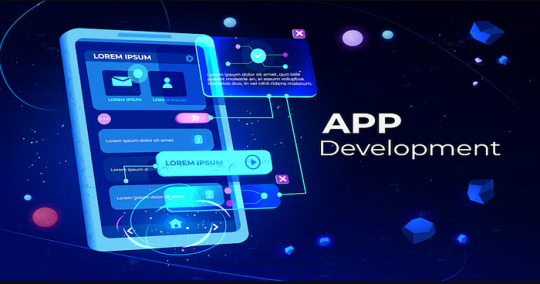
Mobile app development is the process of creating software applications that run on mobile devices like smartphones and tablets. These applications are typically developed for two major platforms: iOS (Apple devices) and Android (Google devices). The development process includes idea conceptualization, designing, coding, testing, and deployment, followed by maintenance and updates.
There are three main types of mobile apps:
Native Apps — Built specifically for one platform (iOS or Android) using platform-specific languages like Swift or Kotlin.
Hybrid Apps — Created using web technologies like HTML, CSS, and JavaScript, and wrapped in a native container.
Cross-Platform Apps — Developed using frameworks like Flutter, React Native, or Xamarin, allowing a single codebase to run on multiple platforms.
Why Mobile Apps Matter

The growing reliance on mobile devices has made mobile apps essential tools for businesses and individuals alike. Here’s why mobile apps are so influential:
Convenience: Mobile apps provide easy access to services and information from anywhere at any time.
User Engagement: With features like push notifications, mobile apps help businesses stay connected with their customers.
Revenue Generation: Many businesses use mobile apps to monetize through ads, subscriptions, or in-app purchases.
Brand Loyalty: Apps enable personalized experiences that build stronger relationships with users.
The Mobile App Development Process
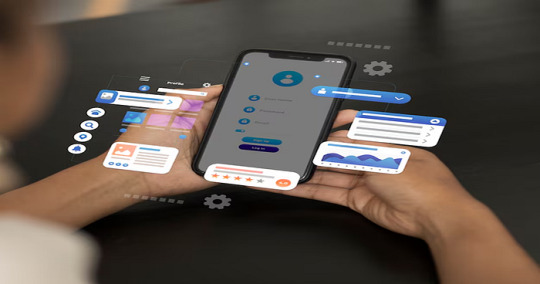
Developing a successful mobile app requires careful planning and execution. Here’s a breakdown of the key stages:
1. Idea and Market Research
Every app begins with an idea. Conducting thorough market research helps identify target audiences, analyze competitors, and determine the app’s unique value proposition.
2. Planning and Strategy
Once the idea is validated, developers and stakeholders plan the app’s features, design, platform, and technology stack. This stage also involves setting timelines and budgets.
3. UI/UX Design
User Interface (UI) and User Experience (UX) design are crucial for making the app intuitive and visually appealing. Tools like Figma, Adobe XD, and Sketch are commonly used to design user-friendly interfaces.
4. Development
Depending on the chosen platform and approach (native, hybrid, or cross-platform), developers begin coding the front-end and back-end components of the app. Integration with APIs, databases, and third-party services is also done here.
5. Testing
Before launch, the app goes through rigorous testing to identify bugs, security issues, and performance bottlenecks. Quality assurance ensures that the app functions correctly across various devices and operating systems.
6. Deployment and Launch
After successful testing, the app is submitted to the Apple App Store or Google Play Store for review and release. This stage includes preparing app store listings with descriptions, screenshots, and promotional materials.
7. Maintenance and Updates
Post-launch, developers monitor the app for issues, user feedback, and performance metrics. Regular updates are essential to add new features, fix bugs, and ensure compatibility with the latest OS versions.
Get Started with a Free Trial
Popular Tools and Technologies
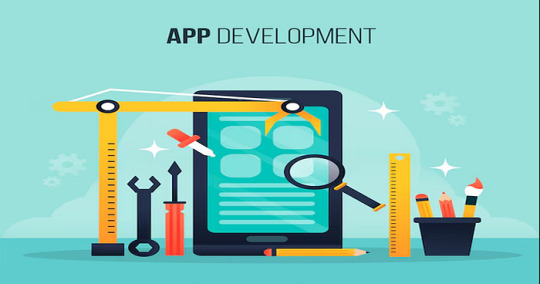
Mobile app developers leverage various tools to streamline development:
Android Studio and Xcode for native app development.
Flutter, React Native, and Xamarin for cross-platform development.
Firebase, AWS Mobile Hub, and Google Cloud for backend and hosting services.
Appium and TestFlight for app testing.
Trends Shaping the Future of Mobile App Development
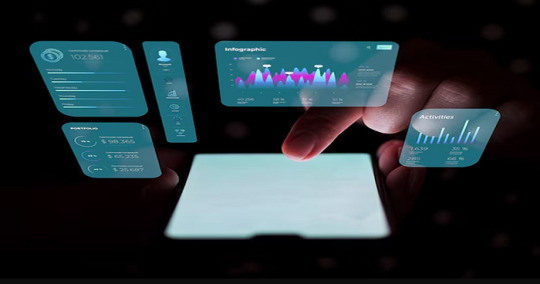
Mobile app development is continuously evolving with emerging technologies:
Artificial Intelligence (AI) and Machine Learning (ML) are powering smarter apps with personalized experiences.
Augmented Reality (AR) and Virtual Reality (VR) are transforming gaming, retail, and real estate apps.
5G technology is enhancing app performance with faster data transfer speeds.
Wearable devices and IoT integration are creating new opportunities for health, fitness, and smart home apps.
#Mobile App Deployment#Mobile App Testing#Mobile UI/UX Design#Android & iOS Development#Cross-Platform App Development
0 notes
Text
What Exactly Does a Web Designer Do?

In today's digital world, having an attractive and functional website is essential for any business. Whether you're a small startup or an established enterprise, your website is often the first point of contact for potential customers. That’s where a web development company in Noida can play a crucial role. But many people confuse web design with development, not realizing how distinct and vital the role of a web designer is in creating an engaging online presence.
Understanding the Role of a Web Designer
A web designer is responsible for the overall look and feel of a website. Their primary goal is to ensure that the site is visually appealing, easy to navigate, and aligned with the brand's identity. Unlike web developers who focus on coding and functionality, web designers are more concerned with user experience (UX) and user interface (UI) design.
From selecting color schemes and typography to arranging content and crafting layout structure, web designers focus on the aesthetics and usability of a site. They create mockups and wireframes that help visualize the final product before development begins.
Key Responsibilities of a Web Designer
1. Creating Design Concepts
A web designer starts by understanding the client’s business goals and target audience. Based on this, they create design concepts that reflect the brand’s message. This includes choosing appropriate fonts, colors, and imagery that resonate with the users.
2. User Experience (UX) Design
User experience is at the core of modern web design. A web designer must ensure that the site is intuitive, user-friendly, and efficient. This means organizing information logically, ensuring easy navigation, and reducing the number of clicks needed to access content.
3. Responsive and Mobile-Friendly Design
With most users accessing websites on smartphones and tablets, responsive design is no longer optional. A web designer must ensure that the website adapts seamlessly to all screen sizes. Whether it’s a small business site or an enterprise-level platform, the experience should remain consistent.
4. Collaboration with Developers and Clients
Web designers work closely with both developers and clients. Once the design is approved, they hand over design assets and collaborate with the development team to ensure the final build matches the intended design. In many Web Development Services in Noida, designers and developers work in tandem to bring concepts to life.
5. Keeping Up with Design Trends
The digital landscape evolves quickly. Web designers must stay updated with the latest design trends, tools, and technologies. This includes knowledge of UI/UX principles, proficiency in design software like Adobe XD, Figma, or Sketch, and understanding basic HTML and CSS.
Tools Used by Web Designers
Some popular tools and software used in the web designing process include:
Adobe Photoshop & Illustrator: For image editing and graphic design.
Figma & Sketch: For creating UI prototypes and collaborating with teams.
InVision: For interactive mockups and client feedback.
Canva: For simple and quick design tasks.
Why Good Web Design Matters
A professionally designed website can boost user engagement, improve conversion rates, and strengthen brand credibility. Businesses that invest in quality web design often see better performance, both in search engine rankings and user satisfaction. If you're looking for a full-service solution, a web development company in Delhi NCR can provide both design and development expertise under one roof.
Final Thoughts
In summary, a web designer plays a critical role in building a successful online presence. From conceptualization to user experience design, they ensure that a website is not just beautiful but also functional and user-centric. Businesses looking to enhance their digital footprint should consider partnering with experts offering Web Development Services in Delhi NCR to ensure every design element aligns with their strategic goals.
0 notes
Text
Level Up Your Tech Game: The Essentials of Software Development May 2, 2025
Hey everyone! 👋 Ever wondered what goes on behind the scenes when you tap an app icon or click “Buy Now” on your favorite site? Let’s dive into the world of software development—where ideas turn into powerful tools that make our lives easier, more fun, and more connected.

“Great software isn’t just about code—it’s about solving real problems and creating moments of delight.” — A Dev’s Guide to Building Awesome
1. Dream It, Plan It 💭
Every great application starts with a spark—an idea. Maybe you want a to‑do list that actually motivates you, or an e‑shop with ultra‑smooth checkout. First step? Gather your requirements:
Who is this for?
What problem are you solving?
When do you need it by?
How will users interact with it?

Jot down your answers, sketch some wireframes, and get everyone on the same page before writing a single line of code.
2. Design & Architecture 🏗️
Now that you know what you need, it’s time for blueprints. Think of this as choosing the layout, materials, and systems for a house:
High‑Level Architecture: Will it be a single monolithic app or a set of micro‑services talking to each other?
Tech Stack: JavaScript frameworks (React, Vue), backends (Node.js, Django), databases (PostgreSQL, MongoDB)… the list goes on!
User Experience: Clean interfaces, intuitive flows, and responsive designs that work on any device.
Good design lays the foundation for a smooth build and happy users.
3. Write the Code 💻
Time to roll up your sleeves. Developers translate those designs into code, one function at a time. Best practices to keep in mind:
Modular Code: Break big problems into small, reusable pieces.
Version Control: Use Git to track changes, collaborate with teammates, and roll back mistakes.
Code Reviews: Peer feedback helps catch bugs early and spreads knowledge across the team.
4. Test, Test, Test 🧪
Before you let the world in, you need quality checks:
Unit Tests: Verify individual functions work as expected.
Integration Tests: Ensure components play nicely together.
User Acceptance Testing: Real users try it out and give feedback.
Automated tests save time and keep your app reliable—because nobody likes a crash, right?
5. Deploy & Iterate 🚀
Once everything shines green, you’re ready to deploy. Continuous Integration/Continuous Deployment (CI/CD) pipelines can automate builds, tests, and releases so updates happen safely and fast. But the journey doesn’t end there:
Monitoring: Track performance and errors with tools like Prometheus or Grafana.
User Feedback: Listen to reviews, surveys, and support tickets.
Continuous Improvement: Roll out new features, fix bugs, and optimize based on real‑world use.
Why It Matters 🌟
From the apps that help us stay healthy, to the platforms connecting global teams, software development shapes our digital lives. Whether you’re a first‑time coder or a seasoned engineer, understanding these steps helps you build better, faster, and smarter.
Ready to Build? 🔨
Sketch your idea on paper or in a simple tool like Figma.
Pick a beginner‑friendly stack (e.g., HTML/CSS/JavaScript + Node.js).
Join communities—Reddit’s r/learnprogramming, freeCodeCamp, Discord channels.
Start small: a personal to‑do app, a simple blog, or a portfolio site.
Level up: experiment with frameworks, cloud deployments, and collaborative projects.
Have questions or want to share your project? Drop a comment below! Let’s learn together.

1 note
·
View note
Text
What to Expect from a Freelance Web Designer
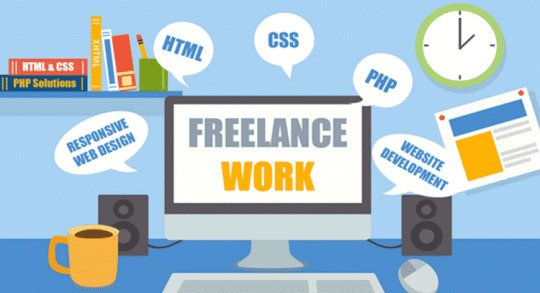
Introduction
Hiring a freelance web designer is a smart move for businesses looking to build or revamp their online presence. These professionals bring flexibility, creativity, and specialized expertise to the table. Unlike agencies, freelancers often offer a more personalized touch and cost-effective services. Understanding what to expect from them can help set realistic goals and ensure project success. This blog explores the key areas where freelance web designers shine and what you, as a client, should anticipate. From communication to technical skills, we’ll cover it all. Whether you're launching a startup or upgrading your current site, this guide is for you. Let's dive into the essentials of working with a freelance web designer.
1. Customized Web Design Tailored to Your Brand
A freelance web designer takes time to understand your business goals and target audience. They focus on crafting designs that reflect your brand identity and create a memorable user experience. Instead of using cookie-cutter templates, they often build custom designs from scratch. Expect them to offer color palettes, typography options, and layouts that align with your vision. They'll also consider your feedback during the design process. This collaborative approach ensures your website feels authentic and unique. A strong design foundation also supports better SEO and user engagement. Ultimately, a freelance designer delivers a site that speaks directly to your audience.
2. Flexible Work Process and Communication Style
Unlike agencies with rigid structures, freelancers usually offer more flexible timelines and processes. This allows for quicker adaptations and changes along the way. Communication can be more direct, often via email, Slack, or even video calls. You’ll typically work one-on-one, which reduces misunderstandings. Freelancers often adjust their workflow based on client preferences. This makes it easier to align expectations and speed up revisions. Clear communication ensures project milestones are met without delays. Transparency in updates and progress is also a key benefit. This personalized interaction is a major advantage of hiring a freelance web designer.
3. Expertise in Modern Design Tools and Technologies
Freelance web designers stay up-to-date with the latest design software and web trends. Expect proficiency in tools like Figma, Adobe XD, Sketch, and Canva. On the development side, many are skilled in HTML, CSS, JavaScript, and CMS platforms like WordPress or Webflow. They often have experience creating responsive designs that look great on all devices. Many also incorporate animation, interactivity, and SEO-friendly coding practices. Their tech-savviness allows them to implement advanced features with ease. You benefit from modern, high-performing websites without needing a full development team. Hiring a freelance web designer ensures your site is built with cutting-edge tools.
4. Cost-Effective Pricing with Transparent Rates
Freelance web designers often charge lower rates than agencies while delivering high-quality results. Pricing structures vary — hourly, per project, or based on deliverables. Transparency in quotes and contracts is common, so you’ll know exactly what you're paying for. Many offer packages that include design, development, and maintenance. This can be more affordable than hiring separate specialists. Freelancers also tend to have lower overhead costs, passing those savings on to you. You can often negotiate based on your budget and project scope. Overall, freelancers offer great value for money without compromising on quality.
5. Portfolio and Past Work as a Reference Point
One of the best ways to evaluate a freelance web designer is through their portfolio. Most freelancers showcase their work on personal websites or platforms like Behance and Dribbble. You can review past projects to gauge design style, creativity, and technical ability. A strong portfolio demonstrates their experience across industries and design types. It also helps set realistic expectations for your own project. Many portfolios include client testimonials, which add credibility. Always ask for examples similar to your industry. Reviewing a designer’s past work gives you a clearer idea of what to expect.
6. Timely Delivery and Professional Responsibility
Freelance web designers understand the importance of deadlines and often pride themselves on timely delivery. They usually provide a project timeline that includes milestones and estimated completion dates. Staying on schedule helps build client trust and ensures project success. Many freelancers use project management tools to keep things organized. Being self-managed professionals, they are typically proactive in meeting commitments. If delays occur, they communicate clearly and propose solutions. This professionalism helps avoid last-minute surprises. When hiring a freelance web designer, expect someone who values your time as much as their own.
7. Revisions and Post-Launch Support
Most freelance web designers include a set number of revisions in their packages. This allows you to refine your website before launch. Feedback sessions are part of the process, ensuring the final product meets your expectations. Post-launch, some designers offer ongoing support for bug fixes, updates, or minor edits. Others may offer monthly maintenance plans. It’s important to clarify this during the hiring process. Having access to continued support brings peace of mind. Freelancers who care about client satisfaction often go the extra mile. This makes them a reliable partner even after the project is complete.
8. Long-Term Relationship Potential
Working with a freelance web designer can lead to a long-term collaboration. Once they understand your brand, they become more efficient at delivering future projects. Many clients continue to work with the same designer for updates, redesigns, or marketing materials. Trust and familiarity streamline the creative process. Long-term partnerships can also lead to discounted rates and faster turnaround times. Freelancers value repeat business and often prioritize returning clients. As your business evolves, your designer can adapt your site to match. This ongoing relationship adds real value over time.
Conclusion
Choosing a freelance web designer offers numerous benefits, from personalized design and cost savings to long-term collaboration. Their flexibility, technical skills, and one-on-one approach make them ideal for businesses of all sizes. By understanding what to expect — from design expertise to communication style — you’ll set the stage for a successful and enjoyable project. With the right freelancer, your website will not only look great but perform effectively too. Make sure to review portfolios, ask clear questions, and establish expectations from the start. Investing in the right freelance designer can transform your digital presence.
FAQs
What does a freelance web designer do? They create, design, and sometimes develop websites tailored to a client’s specific needs and brand.
How much does a freelance web designer charge? Rates vary, but they’re generally more affordable than agencies and often offer flexible pricing models.
Do freelance web designers also do development? Many do both design and front-end development, especially on platforms like WordPress or Webflow.
How do I find a reliable freelance web designer? Look for portfolios, client reviews, and clear communication in early conversations.
Is working with a freelancer better than hiring an agency? It depends on your needs; freelancers offer flexibility and cost savings, while agencies offer a full team.
Do I need to provide content to the web designer? Usually yes — text, images, and branding details are needed, but some freelancers offer content support.
How long does it take to complete a website? Timelines vary, but small to mid-sized websites often take 2–6 weeks depending on complexity.
What happens after the website is launched? Freelancers may offer support, maintenance, or handover documentation depending on your agreement.
#Freelance web designer#Freelance web developer#Outsource web design#wordpress virtual assistant#Web design virtual assistant
0 notes
Text
Website Design and Website Development: Understanding the Distinctions with Jordie’s Creative Agency
Business success in modern times depends heavily on building strong internet visibility. Online presence for businesses relies on two essential blocks which include website design as well as website development. Online website creation process contains several elements wherein website development and website design have varying yet overlapping characteristics. Businesses targeting an effective online platform need to grasp the fundamental differences between website design and website development.
Introduction to Jordie’s Creative Agency & What’s Our Thought on Website Design and Website Development
We operate from Bangalore as we serve as a leading digital marketing company which delivers complete web solution services. We specialize in creating websites through an exact blend of creative design and modern development which produces aesthetically pleasing robust systems.
In the realm of web creation, it’s essential to distinguish between website design and website development, as both play pivotal roles in delivering a successful online presence.
What Is Website Design?
A website design concentrates primarily on site appearance together with user experience (UX). Creating a layout while selecting colors and typography along with designing the complete design appearance leads to an interface that engages users. Key elements include:
User Interface (UI) Design: Creating interactive and visually cohesive interfaces.
Graphic Design: Graphics designers blend brand-aligned visual components which include images together with icons and logos into their work.
Responsive Design: The website design must respond and adapt flawlessly to all kinds of devices with different screen sizes.
What Is Website Development?
Organizational work that creates websites consists of developing their fundamental framework and ongoing structural support. The site operating mechanism functions correctly while maintaining high efficiency through this development approach. The development process contains two essential components which are:
Front-End Development: The front-end development process requires developers to write the interactive visual components in HTML and CSS and JavaScript elements.
Back-End Development: The development process for server-side operations and application logic together with databases enables the front-end to operate correctly.
Key Differences Between Website Design and Website Development
Website development tasks differ greatly from the role of website design in creation activities.
Focus: The domain of website design focuses on creating the look and user experience yet development concentrates on generation and system performance.
Tools and Skills: Adobe XD or Sketch represent typical tools which designers employ along with creativity and visual abilities. Proficient developers must use coding languages together with frameworks because they need technical expertise to perform analytical tasks.
Jordie’s Creative Agency’s Approach to Web Design and Development
The entire approach used by us merges both design and development processes. Our process involves:
Collaborative Strategy: The creative process brings designers and developers together at the start to create design and functional alignment.
User-Centric Focus: Our team embraces solutions which put user experiences first while delivering both functional ease of use and visual attractiveness for end-users in their interface.
Services Offered by Jordie’s Creative Agency
Custom Website Design: We create personalized websites that showcase your brand image while engaging prospective clients through tailored designs.
Responsive Development: Our team creates websites that automatically deliver ideal viewing quality to users who use diverse screen devices.
E-commerce Solutions: Our team creates protected and expandable web stores for businesses intending to extend their commercial operations.
Content Management Systems (CMS): Implementing user-friendly CMS platforms like WordPress for easy content updates.
Case Study
We delivered extensive web design and development services which produce specific outcomes for our clients. Our established project work includes the following important deliverables:
Whimzy Nook E-Commerce — Web Design & Development
Our team transformed the website of Whimzy Nook through an e-commerce design collaboration which emphasized user experience and visual attraction. User interaction together with purchases grew substantially after the design update.
LDTG Travel & Tourism
LDTG received assistance from our team for developing a complete digital marketing strategy which improved their presence on the online platforms. Our work resulted in a major increase of website visitors and new customer inquiries.
BCI Construction & Project Management
Our collaboration with BCI Construction produced a website that efficiently displayed their services and project history to build their online market effectiveness.
Why Both Website Design and Website Development Are Essential
Successful webpage development demands the united work of design alongside development to create an optimal result. The design element brings users in but development ensures that everything functions properly. Improper care of design elements or development quality leads to poor user satisfaction which might cause consumers to seek other options.
Conclusion
Determining the unique functions of website design and website development ensures successful online presence development. Jordie’s Creative Agency focuses its expertise on uniting these areas of expertise to create functional sites with visual excellence. Join our company now to enhance your digital stand.
0 notes
Text
Top 10 E-commerce Design Trends for Shopify Stores in 2024: The Future of Shopify Theme Aesthetics and Functionality
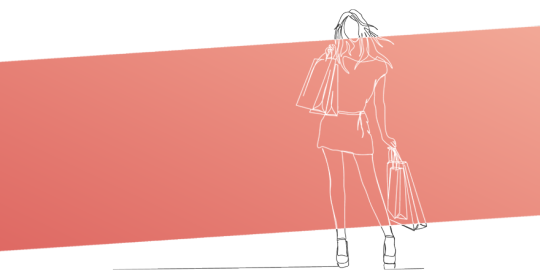
The e-commerce landscape constantly evolves, and staying ahead of design trends is crucial for Shopify store owners looking to stand out and captivate their audience. As we enter 2024, several design trends shape the online shopping experience.
Here, we explore the top ten e-commerce design trends and how to implement them in your Shopify store to enhance aesthetics and user experience.
1. Minimalism: Less is More
The minimalist design continues to dominate the e-commerce space, emphasizing clean lines, uncluttered layouts, and a focus on essential elements. To implement this trend in your Shopify store, reduce visual clutter, use ample white space, and highlight your products with high-quality images.
2. Dark Mode: Elegance and Comfort
Dark mode offers a stylish look while reducing eye strain for users. Incorporate dark mode options in your Shopify store to provide a comfortable browsing experience, especially for customers shopping in low-light environments.
3. Custom Illustrations: Personalize Your Brand
Custom illustrations add a unique touch to your store, setting you apart from competitors.
Use bespoke illustrations to convey your brand’s personality, tell a story, or explain complex products and services.
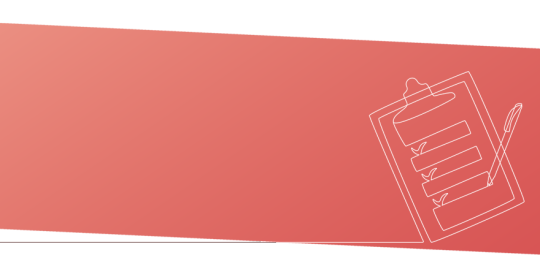
4. Dynamic Product Grids: Engage and Excite
Move away from traditional grid layouts and experiment with dynamic product grids. Mix different sizes and orientations to create a more engaging and visually appealing product display.
5. Bold Typography: Make a Statement
Typography is not just for reading; it’s an essential design element.
Use bold, expressive fonts to grab attention, convey brand identity, and guide users through your site.
6. Microinteractions: Enhance User Engagement
Microinteractions are small animations or effects when users interact with your site. Use them to provide feedback, encourage actions, or add a layer of polish to your store’s design.
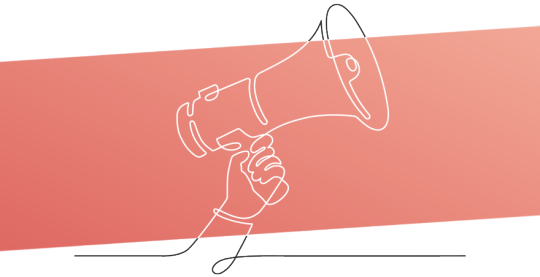
7. Mobile-First Design: Prioritize the Small Screen
With more consumers shopping on mobile devices, a mobile-first approach is essential. Design your Shopify store with mobile users in mind, ensuring easy navigation, fast loading times, and accessible design elements.
8. Augmented Reality (AR): Try Before You Buy
AR technology allows customers to visualize products in their own space before purchasing. Integrate AR into your Shopify store to enhance product pages and provide a more immersive shopping experience.
9. Sustainability and Social Responsibility: Build Trust
Consumers increasingly seek brands that align with their beliefs, ethics, and values. Highlight your store’s commitment to sustainability and social responsibility via design elements, such as eco-friendly product badges or a dedicated ‘Our Values’ section.
“You are the light of the world — like a city on a hilltop that cannot be hidden. No one lights a lamp and then puts it under a basket. Instead, a lamp is placed on a stand, where it gives light to everyone in the house. In the same way, let your good deeds shine out for all to see, so that everyone will praise your heavenly Father. — Matthew 5:14–16
10. Voice User Interface (VUI): The Future of Search
As voice search becomes more popular, optimizing your Shopify store for voice queries becomes increasingly noteworthy. Implement VUI design principles to ensure your store is easily navigable and searchable through voice commands.
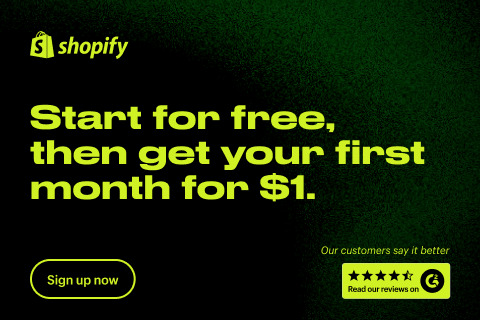
By embracing these design trends, you can create a Shopify store that looks modern and professional and enhances your customers’ shopping experience.
Stay ahead of the curve, and watch your e-commerce business thrive in 2024.
#shopify#e commerce#business#e commerce business#ux desgin#ui design#ux ui design#ui ux design#web design#graphic design#canva#adobe#adobe photoshop#adobe illustrator#adobe stock#adobe firefly#figma#figmadesign#figma to html#sketch#xd#liquid#apps#shopify agency#shopify app development#shopify developers#shopify development company#shopify development agency#shopify development services#outsourcing
0 notes
Text
Hire Expert Software Interface Designers & Developers Today
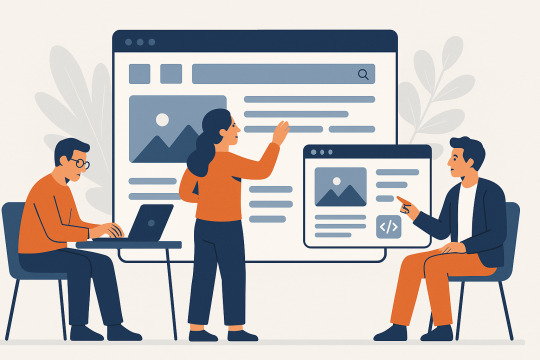
Discover how to hire software interface designer and developers for your business needs. Learn about the skills, services, and benefits of working with top UI/UX professionals today.
Why Hire UI/UX Designers?
A well-crafted UI/UX design enhances user experience, improves engagement, and drives conversions. Hiring professional UI/UX designers ensures that your application or website is visually appealing, user-friendly, and efficient.
Who is a UI/UX Designer?
A hire software interface developers focuses on designing interactive and intuitive digital experiences. While UI (User Interface) design deals with aesthetics and layout, UX (User Experience) design ensures seamless user interactions.
Key Benefits of Hiring UI/UX Designers
1. Enhanced User Experience
A well-structured UI/UX design improves usability and ensures a smooth navigation experience for users.
2. Increased Conversion Rates
An intuitive and visually appealing design keeps users engaged, leading to higher conversions and customer retention.
3. Improved Brand Perception
A professional UI/UX design enhances credibility and leaves a lasting impression on users.
4. Competitive Advantage
Businesses that prioritize UI/UX design gain an edge by offering superior digital experiences.
How to Hire the Best UI/UX Designers?
1. Define Your Requirements
Identify the scope of your project and the specific skills you require from a UI/UX designer.
2. Evaluate Their Portfolio
Examine previous work to assess design quality, creativity, and problem-solving capabilities.
3. Assess Technical Skills
A proficient UI/UX designer should be skilled in tools like Figma, Sketch, Adobe XD, and prototyping software.
4. Consider Communication & Collaboration Skills
UI/UX designers should be able to communicate design ideas effectively and work well with developers and stakeholders.
5. Check Client Reviews and Testimonials
Client feedback offers valuable insights into a designer’s reliability and work ethic.
Essential Skills of a UI/UX Designer
Proficiency in UI/UX Principles
Expertise in Design Tools (Figma, Sketch, Adobe XD)
Knowledge of Prototyping and Wireframing
Understanding of Frontend Development (HTML, CSS, JavaScript)
Strong Problem-Solving Abilities
Good Communication and Collaboration Skills
Industries That Benefit from UI/UX Design
E-Commerce – Optimizing online shopping experiences.
Healthcare – Creating user-friendly telemedicine platforms.
Finance – Designing secure and efficient banking interfaces.
Education – Enhancing e-learning platforms with interactive designs.
Entertainment – Improving UI for gaming and streaming services.
Cost of Hiring a UI/UX Designer
Pricing varies based on experience, location, and project complexity:
Freelancers: $25 - $150 per hour
Mid-Level Designers: $50,000 - $80,000 per year
Senior UI/UX Experts: $80,000 - $150,000 per year
Why Choose Professional UI/UX Design Services?
1. Access to Industry Experts
Hiring a professional design agency ensures expertise in UI/UX best practices.
2. Tailored UI/UX Solutions
Custom UI/UX development services cater to unique business needs.
3. End-to-End Design & Development
From research to implementation, a UI/UX agency provides comprehensive solutions.
FAQs
1. What does a UI/UX designer do?
A UI/UX designer creates user-friendly digital experiences by focusing on usability, functionality, and aesthetics.
2. How do I find the best UI/UX design agency?
Look for agencies with strong portfolios, client testimonials, and relevant industry experience.
3. How much does hiring a UI/UX designer cost?
Costs depend on experience and project scope, ranging from $25 to $150 per hour for freelancers.
4. What tools do UI/UX designers use?
Common tools include Figma, Adobe XD, Sketch, and InVision.
5. How can UI/UX design improve my business?
Good UI/UX design enhances user engagement, increases customer satisfaction, and drives higher conversions.
Conclusion
Investing in expert UI/UX design services is crucial for creating engaging digital experiences. Whether hiring UI/UX designers in India or globally, choosing the right professionals ensures the success of your project. Prioritize user-centric design to improve usability, boost conversions, and gain a competitive edge.
#HireSoftwareInterfaceDesigner#SoftwareInterfaceDesign#UIUXDesign#HireUXDevelopers#UIUXExperts#InterfaceDesignServices#HireSoftwareInterfaceDevelopers#UserInterfaceExpert#CustomUIDesign#HireAppUXExpert#UIUXDesignCompany#HireUIUXDesigners#UXUIDesignServices#SoftwareInterfaceDesigners#HireUIExpert#UXUIDesignAgency#HireSoftwareInterfaceEngineer#UIUXDevelopment#UIUXDesignIndia#UIUXDesignServicesIndia
0 notes
Text
Web Design vs. Web Development: What's the Difference?
When creating a website, two essential roles come into play—web design and web development. While many people use these terms interchangeably, they represent different aspects of building a website. Knowing their differences can help you make informed decisions when working on a digital project. This article breaks down their unique functions and how they complement each other.
What is Web Design?
Web design focuses on the visual layout and user experience (UX) of a website. It involves structuring elements like colors, typography, and interactive features to ensure the site is both attractive and easy to navigate.
Key Aspects of Web Design:
User Interface (UI) Design: Optimizing how users interact with the website.
User Experience (UX) Design: Enhancing usability and accessibility.
Responsive Design: Ensuring the site adapts to different devices and screen sizes.
Branding & Visual Identity: Using logos, color schemes, and imagery to reflect a business’s brand.
Prototyping & Wireframing: Sketching out the structure and layout before development begins.
What is Web Development?
Web development is the technical foundation of a website. It involves writing code that makes a site functional, interactive, and optimized for performance.
Types of Web Development:
Front-End Development: Focuses on the visible parts of the website, using HTML, CSS, and JavaScript to create interactive elements.
Back-End Development: Manages the server, database, and application logic with programming languages such as PHP, Python, and Node.js.
Full-Stack Development: Combines both front-end and back-end work to build complete web solutions.
Web Design vs. Web Development: The Key Differences
Why Do You Need Both?
A website must be both well-designed and properly developed to function effectively. A visually appealing site without strong development may not work as intended, while a technically sound site without good design may not attract users. Web design and development go hand in hand to create a complete, high-performing website.
Which One Do You Need for Your Business?
If you're looking to enhance your website’s appearance or improve user interaction, a web designer is essential. If you need new features, faster performance, or security improvements, hiring a web developer is the way to go. Businesses like Webeyecraft offer comprehensive web design and development services, ensuring your website looks great and functions seamlessly.
Conclusion
In the modern digital landscape, both web design and web development are integral to a successful website. While design focuses on aesthetics and user experience, development ensures functionality and technical performance. Choosing the right balance between the two is crucial for a seamless and engaging online presence. At Webeyecraft, we offer expert solutions to create websites that are visually appealing, highly functional, and optimized for success.
0 notes
Text
Why a UX/UI Design Bootcamp is the Best Way to Start Your Career
Introduction
In today’s fast-paced digital world, businesses are prioritizing seamless user experiences, making UX/UI designers more in demand than ever. If you're looking to break into the industry, enrolling in a UX/UI design bootcamp for beginners can be the quickest and most effective way to gain essential skills and start a rewarding career. Programs like those offered by UX UI Open provide hands-on training to help you master user experience and interface design.
What is a UX/UI Design Bootcamp?
A UX/UI design bootcamp is an intensive training program designed to equip students with the practical knowledge and tools needed to create user-friendly digital products. These bootcamps focus on real-world projects, industry-standard tools, and hands-on learning to prepare students for high-paying careers in UX/UI design.
Why Enroll in a UX/UI Design Bootcamp?
If you're wondering whether a Learn UX/UI Design Bootcamp is the right choice, here are some key benefits:
1. Accelerated Learning
Traditional degree programs take years to complete, but a bootcamp delivers a structured curriculum within months. This fast-tracked approach ensures students acquire job-ready skills in a short period.
2. Hands-On, Practical Training
Bootcamps emphasize practical experience. Students work on real-world case studies, build a professional portfolio, and apply design principles to real projects, making them more attractive to employers.
3. Industry-Relevant Curriculum
UX/UI bootcamps are developed with input from industry experts, ensuring students learn up-to-date skills, including:
User research & usability testing
Wireframing & prototyping (Figma, Adobe XD, Sketch)
Interaction design & design thinking
UI design principles: typography, color theory, and layouts
Front-end basics (HTML, CSS, JavaScript)
4. Mentorship from Experienced Professionals
Many bootcamps provide one-on-one mentorship, giving students direct access to industry professionals who guide them through the learning process and provide career advice.
5. Career Support & Job Placement Assistance
Bootcamps like UX UI Open offer career services, including resume reviews, interview prep, and job placement support, helping students land high-paying UX/UI roles in top tech companies.
Essential Skills Taught in a UX/UI Bootcamp
A Learn UX/UI Design Bootcamp covers both User Experience (UX) and User Interface (UI) design. Some critical skills you’ll master include:
UX Research: Conducting user interviews and persona development
UI Design: Crafting visually engaging layouts using design principles
Prototyping & Testing: Creating interactive wireframes and conducting usability testing
Interaction Design: Enhancing user engagement through animations and micro-interactions
Coding Basics: Understanding front-end development to collaborate with developers
How to Choose the Right UX/UI Bootcamp
Before enrolling in a UX/UI design bootcamp for beginners, consider the following factors:
Curriculum: Ensure it covers both UX and UI comprehensively.
Mentorship: Look for bootcamps with expert instructors and career coaching.
Job Placement Support: Check their success rate for graduates landing jobs.
Student Reviews: Read testimonials to gauge the quality of training.
Flexibility: Decide between full-time, part-time, and online learning options.
Conclusion
If you're serious about starting a career in UX/UI design, a bootcamp is one of the most effective paths to success. With expert mentorship, hands-on projects, and career support, a Learn UX/UI Design Bootcamp can help you achieve your goals quickly. Explore programs like UX UI Open to take your first step toward becoming a professional UX/UI designer today!
0 notes
Text
Also known as diagrams, user flow or UX flow defines a complete user journey or path when availing a service or product; all the way from the beginning. Each and every step a user takes is then mapped to the point of final integration based on all possibilities and challenges that may come across. All that said, a user flow is important to transactions or conversions with a complete process based on communication technology or platform that can be a website, mobile app, or any other. Because user flow has a direct impact on the overall experience, having a high-end, premium and authentic design is extremely important. Now that we have a basic understanding of user flow, let’s explore some of 2021’s best tools to help you out with the entire process that is also used by leading web design Dubai agencies. Wondershare Mockitt With a full suite of handy flowchart, design, and prototyping tools, Wondershare Mockitt takes the lead when it comes to super amazing user flows that may fall anywhere between simple to sophisticated and extreme pro-level. The platform also supports sharing the data with project managers as well as real-time implementation in the design of prototypes. This way, testing, and development can take place instantly to get the job done in a smooth and swift manner. Important Features A wide range of creative assets library including flowchart elements, connectors, and hundreds of supporting components. Editable user flow and flowchart templates. Drag-and-drop functions for quick and clean user flows Support Sketch design and prototype import for better user interaction Easy downloading as HTML packages and online sharing Weje With free infinite online whiteboards from Weje anyone can cope with framing user flows: from a sole entrepreneur or novice marketer to a salted salesman or creator. Design a user flow of varying complexity, either on your own or with the help of a team. Weje offers much for collaboration, including shareable canvases, named cursors, and chat. You can set connections between different elements with arrows or use a mind map-making tool - to comfort the process. Also, you can copy & paste media or figures right onto the board and after - edit and group these, as needed. Important Features Templates library and a built-in mind map maker. Online sticky notes, checklists, and a drawing tool that ease simultaneous editing. A convenient drag and drop tool for effortless work with text and images. An option to download the outcome or share it via email or socials. Figma Another famous design and prototyping platform as well as an effective user flow creating tool. When comparing cost with many other design tools, Figma is a bit expensive but totally worth it. With a large community of designers, creative agencies, and third-party users, Figma lets them contribute outstanding content in terms of a design system, plugins, UI kits, and much more. Plus, you can also import Sketch and Adobe XD files and prototype them. Important Features Massive asset repository that also includes third-party UI kits and user flows. Ready to deploy templates and components with the Flowchart Maker. A greater number of tools for developing creative designs, prototypes, and user flows. The convenience of Autoflow plugin for user flow creation. Additional option to embed flowcharts in Dropbox Paper. Miro Taking design to a whole new level is Miro; a digital whiteboard with ready-to-use diagramming and mapping tools, allowing you to brainstorm and proceed to create outstanding user flows, customer journey, flow charts, and much more. It’s quite a handy tool to let you collaborate on design flows with users, share each other's work, edit and implement in real-time as well as offline. Important Features Ready-to-use widgets and components. Frameworks and templates for a quick start. A complete package of commenting and annotation tools. Integrates with many other design tools such as Sketch, Slack, and more.
Overflow Claiming itself as the world's first user flow and diagramming tools customized specifically for product designs. It works differently from many other digital design tools in a way that lets you work and sync even in offline mode. Overflow also offers integration with many other design platforms letting you merge your designs with the least effort. Important Features Customized and comprehensive flowchart elements. Also, link design layers with app screens. Allow style editing for balancing fonts, text size, and other features with design. Different device skins. Able to split primary user flow into its subcomponents and further divide them into the individual artboard. Lucidchart Holding true to specifically being a flowcharting and workflow tool, Lucidchart lets you conveniently draw the shapes and style them the way you like as per the branding guidelines. With this, the tool also lets viewers follow the entire process for a more immersive and real-time presentation. Lucidchart comes with premium enterprise-grade features like converting CSV to the org chart, import OmniGraffle, Visio, and many others for easy enterprise and user management. Important Features Various style options for consistency between designs and user flows. For neat and clean diagrams, there’s an option for smart lines. For larger canvas, there’s an option to go full-screen. Handy containers for task management and separating them. Real-time annotation and commenting features to let you and others add notes. Wireflow As an online and open-source tool, Wireflow lets you create user flows without any Photoshop skills for maximum ease. In addition, it also offers users above a hundred built-in customized graphics. Like many other tools, Wireflow also allows real-time collaboration with users and friends to double up the speed and effort of creating and sharing amazing user flows in real-time. Important Features Allow designing project rooms/virtual chambers for better project management. The simple and user-friendly tool with high-end essential features to ensure a sure win user flow design. Timblee Works perfectly on both desktop devices as well as mobile, Timblee assists in developing user flow diagrams in the early stages of product development while eliminating the hassle of complex tools in between. On subscription, you’ll get a 14-day trial period. Many website design companies in Dubai, as well as worldwide, are using Timblee so that adds to the must-have factor. Important Features Convenient designing of the sitemaps. Excellent for beginners because of the drag-and-drop canvas. Real-time feedback on work without any restriction to have a Timblee account. There’re many different UX tools and more are expected to surface as we move ahead in the year. For now, you can try out any of the tools listed above to create amazing user flows and take the winning.
0 notes
Text
Web Design Services in India: A Complete Guide to Excellence

In today’s digital era, having a well-designed website is essential for businesses looking to establish an online presence. Whether you're a startup, small business, or a large corporation, a professional website can help enhance credibility, attract customers, and drive sales. India has become a global hub for web design services, offering high-quality, affordable, and innovative solutions to businesses worldwide.
This blog explores the various aspects of web design services in India, their benefits, and why businesses should consider outsourcing their website development needs to Indian professionals.
Why Choose Web Design Services in India?
1. Cost-Effective Solutions
One of the primary reasons businesses choose web design services in India is affordability. Compared to web development companies in Western countries, Indian service providers offer competitive pricing without compromising quality. This makes India an ideal destination for businesses looking to maximize their budget while getting top-tier web solutions.
2. Skilled Professionals and Expertise
India boasts a vast pool of talented designers and developers who are well-versed in the latest design trends, technologies, and programming languages. Indian web designers are proficient in tools like:
HTML, CSS, and JavaScript
WordPress, Shopify, and Magento
ReactJS, AngularJS, and VueJS
UI/UX designing with Adobe XD, Figma, and Sketch
Backend development using PHP, Python, and Node.js
3. Cutting-Edge Technology and Innovation
India is home to some of the best tech professionals who continuously stay updated with the latest web development trends. Indian web design firms adopt advanced technologies, including AI-driven design, motion UI, and responsive frameworks, to create engaging and dynamic websites.
4. SEO and Mobile-Friendly Design
A well-designed website is not just about aesthetics; it should also be optimized for search engines and mobile users. Indian web designers ensure that websites are:
SEO-friendly to rank higher on Google
Mobile-responsive for seamless browsing on all devices
Optimized for fast loading speeds
5. Customization and Scalability
Indian web design companies provide fully customized solutions tailored to specific business needs. Whether you need an e-commerce website, a corporate site, or a personal portfolio, Indian professionals can develop scalable and flexible web solutions to grow with your business.
Services Offered by Web Design Companies in India
1. Website Development
Indian web design agencies specialize in creating fully functional websites using technologies like HTML5, CSS3, JavaScript, and CMS platforms like WordPress, Joomla, and Drupal.
2. UI/UX Design
User experience plays a vital role in web design. Indian web designers focus on crafting intuitive UI/UX designs that provide a seamless and engaging experience for visitors.
3. E-Commerce Website Design
With the rise of online shopping, e-commerce web design services in India have gained immense popularity. Indian developers build feature-rich e-commerce platforms using Shopify, WooCommerce, Magento, and custom-built solutions.
4. Website Redesign and Maintenance
Businesses looking to revamp their outdated websites can benefit from website redesign services. Indian web design agencies enhance website aesthetics, improve functionality, and provide ongoing maintenance and support.
5. Custom Web Application Development
Indian developers create tailored web applications for businesses that require unique solutions, such as customer portals, booking systems, and SaaS applications.
6. Search Engine Optimization (SEO) and Digital Marketing
Many web design companies in India also offer SEO and digital marketing services to help businesses improve online visibility, drive traffic, and generate leads.
Choosing the Right Web Design Company in India
With numerous web design agencies available, selecting the right one can be challenging. Here are some key factors to consider:
1. Portfolio and Experience
Check the agency’s portfolio to evaluate their previous work and expertise. Look for experience in your industry and specific design styles that align with your brand.
2. Client Reviews and Testimonials
Read reviews and testimonials from past clients to gauge the company’s reliability, quality of work, and customer satisfaction.
3. Technology and Tools
Ensure the company is proficient in the latest technologies and frameworks required for your project.
4. Communication and Support
Effective communication is crucial when outsourcing web design services. Choose a company that offers clear communication, regular updates, and ongoing support.
5. Budget and Pricing
While affordability is an advantage of outsourcing to India, it’s essential to balance cost with quality. Compare pricing among different service providers and choose one that offers the best value for money.
Future of Web Design Services in India
The web design industry in India is evolving rapidly with emerging technologies such as:
AI and Machine Learning: AI-powered chatbots and automated design suggestions are becoming popular.
Voice Search Optimization: Websites are being optimized for voice search to cater to smart assistants like Alexa and Google Assistant.
Progressive Web Apps (PWAs): PWAs provide app-like experiences on web browsers, improving engagement and usability.
Dark Mode and Minimalistic Design: New UI/UX trends focus on enhancing readability and user experience with clean and modern aesthetics.
Conclusion
India has become a preferred destination for businesses seeking high-quality, cost-effective web design services. With skilled professionals, innovative technologies, and a customer-centric approach, Indian web design companies continue to set benchmarks in the global web development industry.
Whether you're looking to build a new website, redesign an existing one, or enhance user experience, India offers some of the best web design services tailored to your business needs.
0 notes
Text
web development,
web development,
Web development is the process of building and maintaining websites and web applications that run online on a browser. It involves various tasks, from coding simple web pages to creating complex web-based applications, services, and social networks. This field combines creativity and technical expertise to create dynamic and engaging digital experiences.
Key Components of Web Development
Web development can be broadly divided into three main areas:
Front-End Development:
Focuses on the user interface and user experience (UI/UX).
Involves technologies like HTML, CSS, and JavaScript.
Tools and frameworks commonly used include React, Angular, and Vue.js.
Back-End Development:
Handles server-side logic, databases, and application functionality.
Involves programming languages like Python, Ruby, PHP, Java, and frameworks like Node.js, Django, or Laravel.
Databases such as MySQL, PostgreSQL, and MongoDB are also integral.
Full-Stack Development:
Combines front-end and back-end development skills.
Requires knowledge of multiple programming languages and frameworks to build complete web solutions.
The Web Development Process
Planning:
Define the purpose and objectives of the website or application.
Create wireframes and mockups to visualize the layout and design.
Design:
Focus on aesthetics and usability.
Use design tools like Adobe XD, Figma, or Sketch to craft visually appealing interfaces.
Development:
Write clean, efficient code to implement the planned design and functionality.
Ensure responsiveness and compatibility across devices and browsers.
Testing:
Perform thorough testing to identify and fix bugs.
Utilize tools like Selenium, Jest, or Mocha for automated and manual testing.
Deployment and Maintenance:
Deploy the website or application to a live server.
Regularly update and maintain the site to ensure optimal performance and security.
Popular Web Development Tools and Technologies
Version Control: Git, GitHub, GitLab
Package Managers: npm, Yarn
Task Runners: Gulp, Grunt
CSS Preprocessors: SASS, LESS
JavaScript Libraries and Frameworks: jQuery, React, Angular, Vue.js
Back-End Frameworks: Express.js, Ruby on Rails, Django, Flask
API Development: REST, GraphQL
The Role of Web Developers
Web developers play a critical role in the digital landscape. Their responsibilities include:
Writing and debugging code.
Collaborating with designers and stakeholders.
Optimizing websites for performance and scalability.
Staying updated on the latest trends and technologies.
Career Opportunities in Web Development
The demand for skilled web developers continues to grow as businesses increasingly rely on their online presence. Common career paths include:
Front-End Developer
Back-End Developer
Full-Stack Developer
Web Designer
UI/UX Designer
DevOps Engineer
Future Trends in Web Development
Progressive Web Apps (PWAs): Offer app-like experiences through the browser.
AI and Machine Learning: Enhance user experiences with personalized content and advanced analytics.
Voice Search Optimization: Cater to the growing use of voice assistants.
Cybersecurity: Emphasize secure coding practices to protect user data.
Serverless Architecture: Simplify deployment and scaling with platforms like AWS Lambda or Google Cloud Functions.
Conclusion
Web development is an ever-evolving field that requires continuous learning and adaptation. Whether you’re looking to build a simple website or a complex application, mastering the fundamentals and staying updated with modern tools and techniques will help you succeed in this dynamic industry.
0 notes